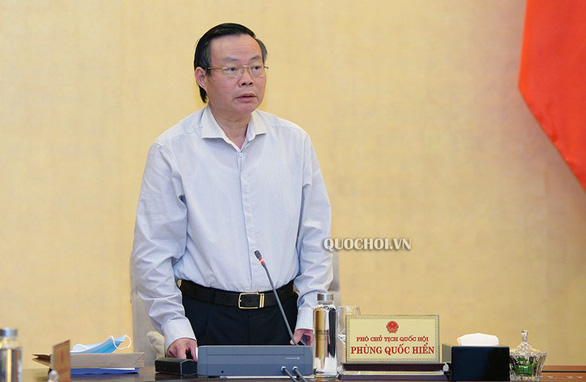Vietnam’s economy will have to grow between 6.5 and 7 percent each year for the next five years if it hopes to boost its GDP per capita to US$5,000 from the current $2,750.
Vice-chairman of the lawmaking National Assembly Phung Quoc Hien met officials of the Ministry of Planning and Investment on Tuesday to evaluate the implementation of the country’s socio-economic development plan for 2016-20 and discuss what direction with which they hope to push the economy over the next few years.
Goals beyond reach
Deputy Minister of Planning and Investment Tran Quoc Phuong used the meeting to announce that Vietnam’s GDP is projected to hit $269 billion by the end of this year, a 40-percent increase from 2015.
He also noted the country’s projected GDP per capita is likely to top $2,750, a 30-percent surge against 2015.
Between 2016 and 2019, GDP growth rates averaged 6.8 percent annually.
This year, due to the impact of COVID-19, that number is forecast to drop to two percent, bringing the average for the 2016-20 period down to 5.8 percent.
The fall has not stopped Vietnam from landing near the top of the global leader board in terms of countries with the highest economic growth.
Progress on 18 of the 21 goals having been outlined in the nation's socioeconomic development plan was evaluated at the meeting, with findings that 14 had been completed while work on four of the goals – economic growth, GDP per capita, percentage of trained workers, and urban unemployment rates – had fallen short.
Deputy Minister Phuong said that labor productivity had soared almost 50 percent since 2015.
From 2016 to 2020, labor productivity is estimated to have expanded 5.8 percent per annum.
That number was just 4.3 percent in 2011-15 and higher than the five percent target outlined for the 2016-20 period.
However, the report also pointed out areas where the plan fell short, highlighting that the increased growth still lags behind the country’s potential.
It also noted the importance of Vietnam keeping up with its neighbors in order to secure its sustainability.
Ambitious targets
Despite several obstacles, the nation has set ambitious targets for the next five years, including an aim to achieve a GDP growth rate of 6-7 percent by 2025 that would see its GDP per capita hit $4,700-5,000.
The processing and manufacturing industries are set to account for 25 percent of the country’s GDP by 2025 while the digital economy will make up 20 percent.
The ministry underlined the importance of investing in key sectors of the economy; national key projects in the fields of infrastructure, energy, digital economy projects, digital transformation, scientific and technology development; and innovation.
It also declared the significance of investment in high-quality personnel training, programs aimed at tacking water supply and climate change challenges, and the overall development of each of the country’s regions.
Several important projects are slated for completion by 2025, including the eastern section of the North-South Expressway and phase 1 of Long Thanh Airport.
Other development priorities include energy projects such as power plants and power grids, IT infrastructure, digital infrastructure, the development of regional data centers, and a national data center system.
The ministry asked that key projects in large cities be sped up, including urban railway projects in Hanoi and Ho Chi Minh City, ring roads, water supply and drainage facilities, and sewage and garbage processing systems.
The total estimated medium-term budget spending for the 2021-25 plan will mount to VND2.75 quadrillion ($119 billion).
Nguyen Duc Hai, chairman of the National Assembly Committee for Financial and Budgetary Affairs, said local authorities from across the country have asked for much higher public investment quotas for 2021-15 compared to the previous phase, which could put serious pressure on the state coffers.
Like us on Facebook or follow us on Twitter to get the latest news about Vietnam!




















































